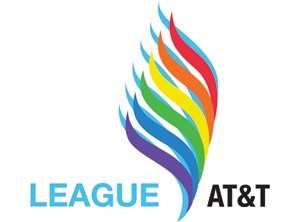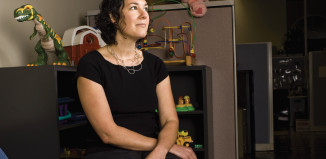Growing up in a loyal household, it’s always been hard to detach from our favorites that have served us so well — our favorite TV personalities, our favorite products, services, even phone company. Needless to say, I’ve been a proud AT&T carrier since I’ve had the freedom to use my own cell phone line. Others tend to wonder why the connection runs so deep— why I’ve chosen to be as loyal as my parents before me. Aside from being a fan of “sticking to what I know,” AT&T has proven to have a lot to offer, extending far beyond cable services, phone lines, and wifi. There’s certainly a reason why AT&T has been ranked number one by Diversity Incorporated Ratings, as one of the best places for the lesbians, gays, bisexuals, and transgenders to work. For the LGBT community, much praise is certainly due to AT&T, specifically, LEAGUE, the first lesbian, gay, bisexual, and transgender employee resource group to ever be established in corporate America.
AT&T isn’t new to being first. In 1975, AT&T made groundbreaking history, being the first fortune 500 company to include sexual orientation in their non-discrimination clause as part of the AT&T EEO policy. The clause emerged after an incident occurred within the company urging Bell System’s then-Senior Attorney to push for the policy change. A little over a decade later in Colorado, LGBT employees found themselves deservingly demanding more than just the induction of a new non-discriminatory clause. In 1987, they founded LEAGUE( Lesbian And Gay United Employees) of AT&T, advocating for equal domestic partnership benefits. With the support of instrumental leaders within the company like Mirian Graddick, Barbara Peda, and Reed Harrison, AT&T became one of the first companies to offer domestic partner benefits to LGBT employees, setting the stage for more growth and opportunity within the company.
Joshua Hampshire, LEAGUE’s current Chief Executive Officer, recalls the long history of LEAGUE, when the employee resource group consisted of only individual chapters. It wasn’t until 1992, after AT&T urged all LEAGUE chapters to unite, that all chapters merged to form a national organization. And by 1996, not only was LEAGUE a strong-standing resource group upholding diversity and a supportive work environment, but LEAGUE had began funding a new entity under their organization — LEAGUE Foundation, providing financial resources to LGBT students pursuing high learning (since, awarding over $169,500 in scholarships to self-identified LGBT youth). In the midst of it all, Hampshire boasts that LEAGUE has still been able to close the inequality gap, expanding benefits to transgender employees (being one of the few companies to cover transgender surgeries), and even offering tremendous support for adoption. However, Hampshire admits LEAGUE is still pushing the envelope, advocating for advances such as maternity leave in situations like his own, in which male employees are expecting and wish to spend time away from work to care for their newborns. LEAGUE also pushes for support of alternatives, such as in vitro for female employees hoping to build families as well. An equal playing field is what the organization rallies to defend. And while some advancements are still in the works, acknowledging how far LEAGUE has come is a must.
With just under 3,500 members and thirty chapters in the U.S., representing 49 of the 50 states, LEAGUE has paved the way for LGBT employees to not just support their families, but also to develop their careers at AT&T. Said to have 120 executive positions within the company, AT&T surely has room for more LGBT employees to attain higher positions in the company. LEAGUE champions for its members to not only represent the LGBT community, but the entire AT&T population while excelling in their career with the support of AT&T.
Members of the organization know all too well how far LEAGUE has come, from uniting AT&T’s LGBT employees, to advocating for equal benefits and offering support and diversity within the company. In the years to come, the employee resource group wishes to continue creating opportunities to build careers, promote diversity and support, engage members and allies, and foster leadership development, all while up-keeping one of the most supportive work environments.





































